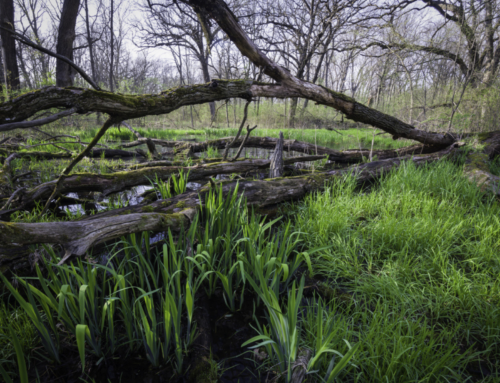March 29, 2012
Testimony of Ron Rhodes, River Steward, Connecticut River Watershed Council before the Vermont House Committee on Fish, Wildlife and Water Resources.
Honorable Ladies and Gentlemen,
Thank you for the opportunity to testify today on S. 202 – an act relating to regulation of flood hazard areas, river corridors, and stream alteration.
As you may know, the Connecticut River Watershed Council is a membership based non-profit that advocates for the four-state Connecticut River watershed. We work to protect the river, its tributaries, the land, plants, and creatures throughout the entire watershed. As one of four river stewards employed by the Council, my work in Vermont and New Hampshire focuses on regulatory proceedings, permit requests, and development plans affecting the watershed. In addition to my work for the Council, I also serve as a volunteer on the boards of other non-profits such as Trout Unlimited and the White River Partnership.
When I testified before this committee earlier this year, I outlined several actions which we believe are critical to helping Vermont recover from Irene and minimizing damage during the next big flood. First, we called for new development in the floodplain to be discouraged and properly managed. In general S. 202 addresses this concern by requiring the State to regulate all proposed activities in mapped floodplains which are currently exempt from regulation. This is a good first step in the right direction.
I also testified about the need for better storm water management practices. Section 6 of the bill, beginning on page 19, addresses this issue by “requiring the secretary to adopt rules regarding the permitting of storm water discharges when a state of emergency is declared.”
The bill also would authorize the Agency of Natural Resources to adopt rules and model bylaws that go above and beyond the National Flood Insurance Program minimums. This also is a good step in the right direction.
Most importantly S. 202 would specifically give ANR much needed rule-making authority over the removal of large woody debris, berm construction, and other emergency stream alteration activities. It is vitally important that we protect in-stream habitat, which provides fish with shelter, spawning grounds and food supply.
The State’s own post-Irene reports have stated that “a significant amount of in-stream activity was conducted without proper consultation and oversight or for reasons beyond necessary flood recovery. These activities continued for several months after the flood event and covered a wide area of the central and southern portion of the state. Post-flood activities which were detrimental to aquatic habitat quality and diversity included large scale removal of streambed material and natural wood, berming of streambed materials to raise stream bank elevations and the straightening of stream channels. These activities resulted in homogeneous, over widened stream channels comprised of small substrates and lacking the diversity of habitats, flows and depths necessary to support robust aquatic populations.”
This Department of Fish and Wildlife assessment of post-flood aquatic habitats conservatively estimates that a total of 77 miles of stream have had major degradation of aquatic habitat resulting from post-flood stream channel alteration activities. In the absence of post-flood channel alterations, wild trout populations generally recover within 2-4 years. Where aquatic habitat has been severely altered through streambed and natural wood mining, channel widening and straightening, this recovery period is expected to jump dramatically – maybe even decades!
In light of this, I think it is safe to say that S. 202 does not do enough to make it clear that the protection of habitat is critical to the survival of our fisheries. As a result we recommend adding the following language to Section 3 (which begins on page 13): “No person shall carry on any work or undertaking that results in the harmful alteration, disruption or destruction of fish habitat.” Adding this specific language will make it clear to everybody that Vermont is serious about protecting our fish, our rivers and our economy.
Yes, I said our economy. In addition to the astronomical costs associated with post-flood channel alterations (e.g. big yellow machines in our rivers), the economic impact of fishing must be considered. Roughly $63 million was spent in Vermont on fishing related activities in 2008 according to the US Fish and Wildlife Service. As a fly fishing guide myself, I can assure the Committee that fishing trips (and trout fishing in particular) are a popular recreational activity for visitors to our great state. When we talk about tourism being important to our Vermont economy, fishing is part of that equation. However, if we don’t do more to protect against degradation of aquatic habitats the likely impact will be a loss of quality stream fisheries and ultimately the loss of revenues (from license sales, fishing related purchases, overnight stays etc.).
There are a few other areas where S. 202 falls short of hitting the mark, including:
Training requirements – The language in Section 4 (on page 17) only requires ANR to make the training available to other state agencies, regional planning commissions and towns. Unfortunately, it does not require VTrans staff and others doing in-stream work to actually take the training. Nor does S. 202 address the issue of training and licensing excavation contractors in the basics of river science. We would prefer to see the language contained in H. 560 adopted in this case.
Emergency permits – Section 5 of the bill does not adequately clarify the permitting process to be used when the Governor declares an emergency. As the bill now reads (on page 18), “A rule adopted under this subsection may include a requirement that an activity receive an individual stream alteration emergency permit or receive coverage under a general stream alteration emergency permit.” The Watershed Council would encourage this Committee to change the language from “may” to “shall” and also clarify that these written emergency permits must be “with conditions to minimize significant adverse environmental impacts.” This additional language would help prevent a repeat of some of the mistakes made post-Irene.
In summary, the Connecticut River Watershed Council appreciates the progress made so far on the regulation of flood hazard areas, river corridors, and stream alteration. S. 202 is a good start, but by no means does it get us to where we need to be. More must be done.
As Commissioner Mears stated this past November, “protecting our communities and avoiding future flood damage requires and is dependent upon protecting our river corridors
We hope this Committee agrees with a broader approach and further enhances the language and provisions of S. 202 in order to accomplish this goal. Thank you. I would be happy to answer any questions.
Ron Rhodes
River Steward
Connecticut River Watershed Council







